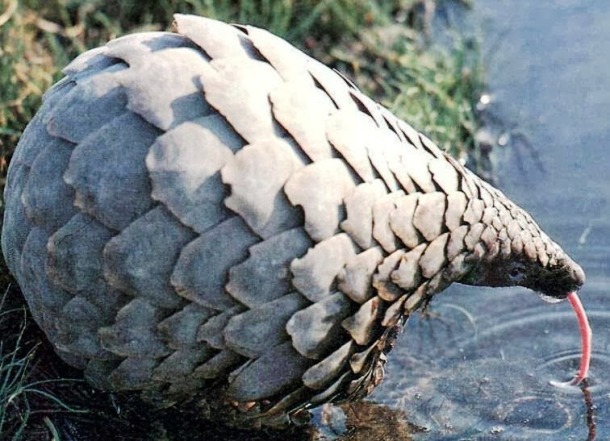…and as the evening of the Sixth Day drew nigh, God thought back over all the good creating He’d polished off in the last few days, and looked forward to a quiet, restful Sunday. And coasted, maybe. Just a little.
Because here’s a metal artichoke. With a tongue.
OK, that’s not actually an artichoke. It’s a pangolin.
What’s a pangolin, you ask?
Pangolins, often called “scaly anteaters,” are covered in tough, overlapping scales. These burrowing mammals eat ants and termites using an extraordinarily long, sticky tongue, and are able to quickly roll themselves up into a tight ball when threatened. Eight different pangolin species can be found across Asia and sub-Saharan Africa.
…
With small conical heads and jaws lacking teeth, pangolins have amazingly long, muscular, and sticky tongues that are perfect for reaching and lapping up ants and termites in deep cavities. Pangolins have poor vision, so they locate termite and ant nests with their strong sense of smell. A pangolin’s tongue is attached near its pelvis and last pair of ribs, and when fully extended is longer than the animal’s head and body. At rest a pangolin’s tongue retracts into a sheath in its chest cavity. A pangolin’s stomach is muscular and has keratinous spines projecting into its interior. Usually containing small stones, the stomach mashes and grinds prey in much the same manner as a bird’s gizzard.
That stomach-spine thing’s pretty weird. Sort of reminds me of the platypus. Not because the platypus has spines in its stomach, of course — It doesn’t, does it? — but because it seems to be a collection of spare parts.
This NatGeoWild video calls it “Nature’s Backhoe.” That’s not a bad thing to be famous for, really. (And it’s a sight better than being known as “Ol’ Keratinous Spine Stomach.” Or “God’s Metal Artichoke.”)












